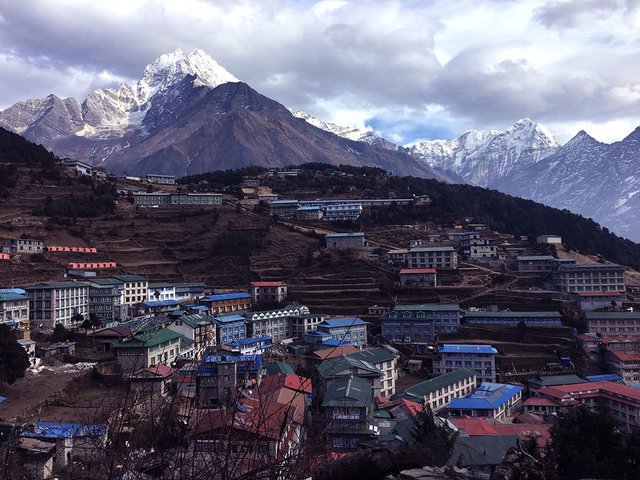
Khumbu Region and Mount Everest
The Khumbu region, located in northeastern Nepal, is a significant area in the Himalayas, known for its breathtaking landscapes and as the gateway to Mount Everest, the highest peak in the world at 8,848 meters (29,029 feet). The region is part of the Sagarmatha National Park, a UNESCO World Heritage Site, and is characterized by its rugged terrain, steep valleys, glaciers, and towering peaks.
Geography and Climate
The Khumbu region is situated in the Solu-Khumbu district and extends from Lukla, where the main trekking route begins, to the Everest Base Camp. The region's climate varies significantly with altitude. Lower areas experience milder weather, while higher altitudes, such as the base camp and surrounding peaks, have harsh, cold conditions, particularly in winter. The trekking season, typically from March to May and September to November, offers the most favorable weather, with clear skies and moderate temperatures.
Sherpa Culture
Khumbu is the homeland of the Sherpa people, who are renowned for their mountaineering skills and have been integral to the history of Everest expeditions. The Sherpa culture is deeply rooted in Tibetan Buddhism, and the region is dotted with monasteries, stupas, and prayer flags. One of the most famous monasteries in Khumbu is the Tengboche Monastery, which serves as a spiritual center and offers panoramic views of Everest and surrounding peaks.
Trekking and Mountaineering
The Khumbu region is one of the most popular trekking and mountaineering destinations in the world. The trek to Everest Base Camp (EBC) is a bucket-list adventure for many hikers, offering a journey through diverse landscapes, including lush forests, alpine meadows, and glacial moraines. Trekkers also encounter several famous landmarks, such as Namche Bazaar, the main trading hub, and acclimatization stop, as well as the Khumbu Icefall, a treacherous section of the route to Everest's summit.
Khumbu Icefall and Everest Expeditions
The Khumbu Icefall, located above Everest Base Camp, is one of the most dangerous sections for climbers attempting to summit Everest. It consists of constantly shifting ice towers and crevasses, which require ladders and ropes to navigate. Despite the risks, many mountaineers are drawn to the challenge of Everest, and the Khumbu region is often bustling with climbers, guides, and support staff during the climbing seasons.
Conservation and Challenges
The Khumbu region faces several challenges, including the impacts of climate change, which have led to glacial melting and increased risk of avalanches and landslides. Additionally, the influx of tourists and climbers has put pressure on the environment and local infrastructure. Efforts are being made to promote sustainable tourism and protect the fragile ecosystem of the region, with initiatives like waste management programs and restrictions on the number of climbers per season.
Conclusion
The Khumbu region, with its dramatic landscapes, rich cultural heritage, and the presence of Mount Everest, remains a captivating destination for adventurers and travelers worldwide. It offers a unique blend of natural beauty, cultural richness, and the allure of the world's highest mountain, making it a truly remarkable place.